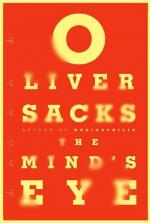|
This section contains 2,906 words (approx. 10 pages at 300 words per page) |

|
SOURCE: Cassuto, Leonard. “Oliver Sacks: The P. T. Barnum of the Postmodern World?” American Quarterly 52, no. 2 (June 2000): 326-33.
In the following essay, Cassuto explores Sacks's representation of the disabled, arguing that he tends to imbue his case studies with aspects of the freak show.
The historic problem in representing disabled people's lives has always been the control of that representation. When others speak for the disabled, they often point the way to the freak show and the medical theater, two arenas of human objectification. The freak show, which flourished well into the twentieth century, depended on the spectacular mystification of disability; promoters exhibited disabled people as wondrous creatures of stupefying difference. Medical discourse has been fairly credited with killing off the freak show by rendering its fantastic displays in prosaic terms as medical anomalies.1 But in place of the freak show's alienating presentations, medicine has substituted a different...
|
This section contains 2,906 words (approx. 10 pages at 300 words per page) |

|


